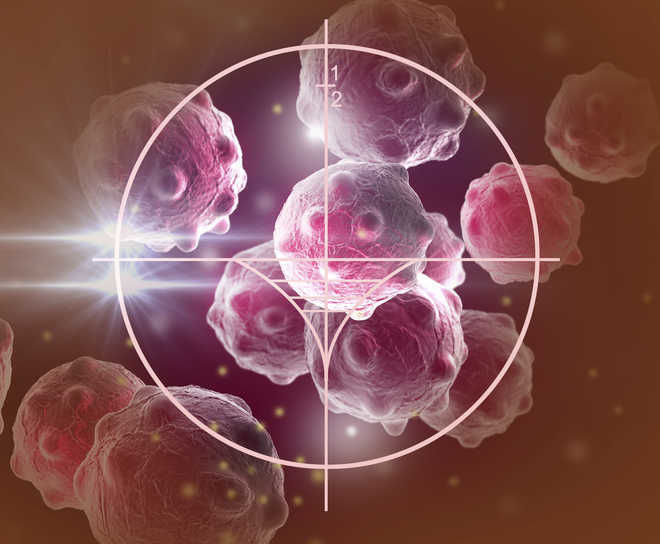According to the Lancet Commission, breast cancer will kill one million people annually by 2040
Breast cancer is already the most frequent carcinogenic illness worldwide, and by 2040, it is expected to claim one million lives annually, according to a recent Lancet Commission on Breast Cancer report.

According to the report, around 685,000 women lost their lives to breast cancer in 2020, out of the 7.8 million women who received a diagnosis in the previous five years.
Furthermore, researchers discovered that in 2020, women worldwide had an average 1 in 12 chance of receiving a breast cancer diagnosis before becoming 75 years old, and that this prevalence is growing.
It is projected that the number of instances of breast cancer would rise from 2.3 million in 2020 to over 3 million by 2040, with a “disproportionately affected” population of low- and middle-income countries (LMICs).
The group also predicted that a million people would die from the illness annually by 2040.
“This is neither acceptable nor inevitable as action now can prevent many of these future cancers,” the researchers stated.
Effective action is still hindered, they added, by knowledge gaps such as the unidentified number of women who have metastatic breast cancer, which is when the disease spreads to other regions of the body.
The authors of the panel said that society and policymakers are only aware of the “tip of an iceberg” when it comes to the extent of pain brought on by breast cancer and other expenses.
The principal author of the commission, Charlotte Coles of the University of Cambridge in the UK, said, “Recent improvements in breast cancer survival represent a great success of modern medicine,” citing the 40% reduction in disease-related mortality that has been achieved in several high-income countries (HICs).
“However, we can’t ignore how many patients are being systematically left behind,” said Coles.
The authors claim that in order to shine light on a significant hidden burden, the commission incorporates patient perspectives, adds fresh data, and expands on prior findings.
It draws attention to “glaring inequities” and the financial burden, hopelessness, and symptoms of breast cancer that are often “hidden and inadequately addressed”.
In its suggestions for addressing these issues with breast cancer, the commission recommended that patients and healthcare providers communicate more effectively. This intervention might have a favorable influence on survival by improving quality of life, body image, and adherence to medication.
Reshma Jagsi of Emory University School of Medicine in the US said, “Women’s fundamental human rights have historically been accorded less respect than men’s in all settings, with implications for patient agency and autonomy.”
It is recommended that all healthcare professionals get training in communication skills. Even though it may seem straightforward, improving patient-health provider communication might have significant advantages that go far beyond the confines of breast cancer treatment, according to Jagsi.
“Patients should be encouraged to exercise their voices, choosing their level of involvement in care decisions,” she said.
The commission also supported the creation of new instruments and measurements that can quantify the financial, psychological, social, and physical expenses related to breast cancer.
“Global data are essential to expose, better understand, and address the multiplicity of needs of all people affected by breast cancer and significantly reduce the global burden of preventable suffering,” said the author, Carlos Barrios, of the Oncology Research Center at Hospital São Lucas, Brazil.
Patients feel these expenses more often and intensively in nations without access to cheap health care, which all too frequently results in disastrous expenditure and destitution, according to Barrios.
According to the authors, most LMICs have not witnessed the 40% decrease in breast cancer-related fatalities found in HICs. In these areas, advanced stages of the disease at diagnosis and inadequate resources for diagnosis and treatment lead to lower rates of breast cancer survival.
According to them, whereas these survival rates are above 90% in HICs, they are just 66% in India and 40% in South Africa.
The scientists also discovered that all of the nations that had increases in breast cancer survival rates between 1990 and 2020 were able to identify at least 60% of invasive breast tumors at an early stage, supporting the need for better early detection initiatives.
The authors also demanded “bold policy changes” that would lower the population’s exposure to risk variables that are within their control, such alcohol use, obesity, and physical inactivity.
According to them, altering breast cancer risk factors might avert up to 25% of cases of breast cancer among Hispanic/Indigenous people.
“We hope that, by highlighting these inequities and hidden costs and suffering in breast cancer, they can be better recognised and addressed by health care professionals and policymakers in partnership with patients and the public around the world,” Coles said.







